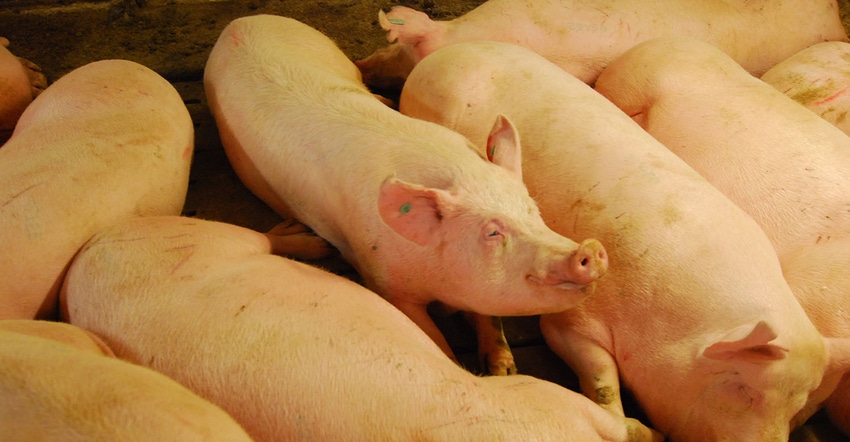SHIC, AASV swine influenza webinar addresses seasonal issues
In the last two years, 55% of sow herds in Classen’s systems have had a new influenza outbreak and 11% were breaking with two strains during the same flu season.
December 16, 2021

A webinar on swine influenza management strategies was recently offered by the Swine Health Information Center (SHIC) along with the American Association of Swine Veterinarians (AASV) and hosted by the Iowa State University Swine Medicine Education Center (ISU SMEC). The webinar, available here, featured Dr. Amy Vincent, U.S. Department of Agriculture-Agricultural Research Service (USDA-ARS) National Animal Disease Center, and Dr. Phil Gauger, ISU, experts in swine influenza and related research, along with Dr. Dyneah Classen, Carthage Veterinary Service, a practitioner with hands-on swine influenza experience.
Vincent provided background on influenza A virus (IAV) in swine as well as discussed surveillance and tools to monitor virus diversity and evolution. She covered the impact of genetic evolution on antigenic diversity of hemagglutinin (HA) and neuraminidase (NA) influenza strains and their sequences. Her presentation also included information regarding limitations on vaccines in the real world along with vaccine research and immune responses to sequential vaccination or exposure.
Vincent cautioned the audience to remember IAV in swine changes rapidly due to genetic mutation and antigenic drift. The emergence of new genetic lineages by migration or interspecies transmission and adaptation impacts IAV detection and response.
"Robust surveillance and HA/NA sequencing are necessary for improved vaccines," said Vincent. Immune responses to infection and vaccination are impacted by many factors and the sequence of exposure or vaccination can impact subsequent antibody responses, according to Vincent.
Gauger presented diagnostic methods to detect influenza in swine, including timing of sample collection, sample types, tests available and interpretations including expected outcomes of sequencing and virus isolation based on concentration of swine influenza A in the sample.
IAV diagnostic testing goals address postmortem and antemortem diagnostic testing. In postmortem testing, the goal is diagnosing the cause of clinical respiratory disease. Antemortem diagnostic testing has broader implications.
"Most IAV diagnostic testing involves monitoring or surveillance purposes," Gauger said.
The process identifies the presumptive diagnosis of clinical respiratory disease in a population, surveillance to establish IAV status at the farm or population level, monitoring the frequency of IAV infection/detection to develop control measures, success of intervention strategies and genetic diversity of circulating strains in the production system. The process also assists selection of an appropriate sampling strategy, sample types and type of test to use based on the submitters diagnostic question.
There are a diversity of sample types for IAV diagnostic testing to address ease of collection, population or group sample types, improved detection of IAV as well as increasing compliance of sample collection per routine monitoring protocols, said Gauger. He also shared IAV sampling strategies saying sample collection at the litter or pen level is best for detection. Research has shown improved detection in this format compared to individual sample types (Garrido-Mantilla et al., 2019). The individual sample type is best to obtain isolates, however, per the same research, Gauger emphasized that sample size should be based on expected prevalence and clinical impressions.
While IAV can circulate among swine throughout the year, Classen said most outbreaks occur during the late fall and winter months. Clinical signs in swine can start out similar to other diseases with animals off feed, showing lethargy, high fevers (rectal temperatures of 104 degrees Fahreheit and above), increased mortality and in pregnant sows, abortions. Other clinical signs seen as the disease progresses are nasal discharge and a deep, barking cough.
Classen shared her experience with the Prime and Boost influenza vaccination protocol. The strategy involves choosing two vaccines that are genetically different, or heterologous, and giving a priming dose and following up two to four weeks later with a booster dose. The supposition is the two different vaccinations will boost the immune response.
In the last two years, 55% of sow herds in Classen’s systems have had a new influenza outbreak and 11% were breaking with two strains during the same flu season. She says the utilization of oral fluids has increased passive surveillance of finishing herds and found non-clinical herds positive for influenza.
Classen shared an influenza endemic herd elimination program. This process begins with identification of the endemic strain or multiple strains identified through testing and uses an autogenous vaccine with 3% or less heterology (97% homology).
"This can be a multivalent vaccine or can be made specifically for the endemic strains," Classen said.
SHIC/AASV sponsored webinars bring together subject matter experts to discuss current issues facing U.S. pork producers and practitioners. Previous webinars are posted online for convenient access here.
SHIC, launched by the National Pork Board in 2015 solely with Pork Checkoff funding, continues to focus efforts on prevention, preparedness and response to novel and emerging swine disease for the benefit of U.S. swine health. SHIC is funded by America's pork producers to fulfill its mission to protect and enhance the health of the U.S. swine herd.
You May Also Like



